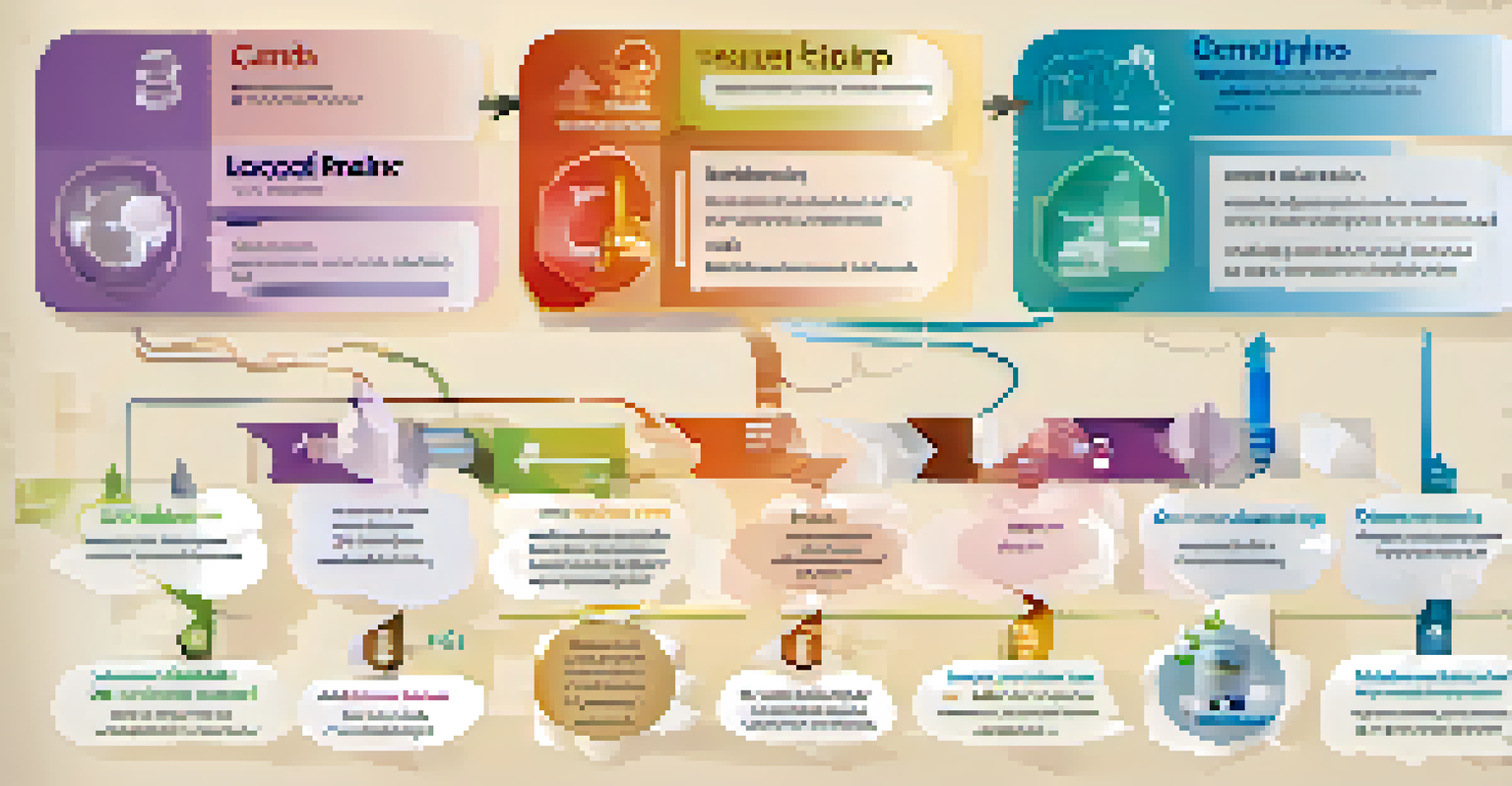Cognitive Load Theory: Implications for Instructional Design

Understanding Cognitive Load Theory and Its Origins
Cognitive Load Theory (CLT) was developed in the 1980s by John Sweller. It focuses on the brain's capacity to process information and how this impacts learning. At its core, CLT suggests that our working memory has limited capacity, which means we need to be mindful of how we present information.
The mind is not a vessel to be filled, but a fire to be kindled.
The theory identifies three types of cognitive load: intrinsic, extraneous, and germane. Intrinsic load relates to the inherent difficulty of the material, extraneous load comes from how the content is presented, and germane load refers to the mental effort required to process and learn the material. Understanding these loads is crucial for effective instructional design.
By recognizing these different types of cognitive load, educators can create learning experiences that optimize retention and understanding. This sets the foundation for creating instructional materials that are not only informative but also engaging and accessible.
The Role of Intrinsic Load in Learning Experiences
Intrinsic load is determined by the complexity of the content being taught. For instance, learning basic arithmetic (like addition and subtraction) is less complex than mastering calculus, which involves multiple concepts and rules. Thus, instructional designers must assess the inherent difficulty of their material.

When designing learning experiences, it’s essential to break down complex concepts into smaller, more manageable parts. This can be likened to climbing a mountain; taking one step at a time makes the ascent easier and more achievable. By scaffolding information, educators can help students build a solid foundation.
Understanding Cognitive Load Types
Cognitive Load Theory identifies intrinsic, extraneous, and germane loads, which are essential for effective instructional design.
Ultimately, understanding intrinsic load enables designers to tailor their instruction to meet learners' needs. This ensures that students aren't overwhelmed and can progress at their own pace, leading to a more effective learning experience.
Managing Extraneous Load for Better Engagement
Extraneous load is the unnecessary cognitive effort that can hinder learning. This often arises from poor instructional design, such as cluttered slides or lengthy, convoluted explanations. When students are distracted by these elements, their ability to absorb information is compromised.
It is not the answer that enlightens, but the question.
To mitigate extraneous load, instructional designers should focus on clarity and simplicity. Think of it like decluttering a room; removing distractions allows for a clearer focus. This can involve using visuals effectively, streamlining text, and providing clear instructions.
By minimizing extraneous load, educators can create an environment that fosters concentration and boosts learning outcomes. When students can focus on the content rather than deciphering confusing materials, they are more likely to engage and retain what they learn.
Enhancing Germane Load to Foster Deep Learning
Germane load is crucial for deep learning because it refers to the cognitive effort dedicated to processing and understanding the material. It’s about making connections and integrating new information with prior knowledge. This is where true learning happens.
To enhance germane load, instructional designers can incorporate activities that encourage critical thinking, problem-solving, and collaboration. For example, group discussions or hands-on projects allow learners to apply concepts in real-world contexts, making the learning experience more meaningful.
Importance of Prior Knowledge
Prior knowledge significantly influences how learners process new information, emphasizing the need for tailored instructional materials.
When learners are actively engaged in their education, they're more likely to internalize and retain information. This deep engagement is key to fostering a love for learning, transforming the educational experience into something fulfilling and impactful.
The Importance of Prior Knowledge in Cognitive Load Theory
Prior knowledge plays a significant role in how learners process new information. Those with a solid foundation in a subject can tackle more complex materials with ease. This is why assessing learners' pre-existing knowledge is vital when designing instructional content.
When designers account for prior knowledge, they can tailor their materials to fill gaps and build on what students already know. This could mean offering introductory resources for novices or providing advanced challenges for more experienced learners. It’s about meeting learners where they are.
By aligning new information with existing knowledge, educators can reduce intrinsic load and facilitate a smoother learning journey. This personalized approach ensures that all learners can progress effectively, making education more accessible and enjoyable.
Strategies for Effective Instructional Design Using CLT
Implementing Cognitive Load Theory in instructional design requires thoughtful strategies. One effective strategy is using worked examples, which guide learners through problem-solving processes step-by-step. This reduces cognitive overload and allows students to understand complex concepts more clearly.
Another approach is to employ multimedia resources that combine text, visuals, and audio. By catering to different learning styles and preferences, designers can enhance engagement and provide multiple pathways for understanding. For instance, a video demonstration can complement written instructions.
Evaluating Instructional Design
Continuous evaluation of instructional design through learner feedback and assessments is vital for improving educational effectiveness.
Ultimately, the key is to create a balanced learning environment that minimizes extraneous load while promoting germane load. By focusing on these strategies, educators can enhance the overall effectiveness of their instructional materials and foster a supportive learning atmosphere.
Evaluating Instructional Design Through the Lens of CLT
After designing instructional materials, it’s essential to evaluate their effectiveness. This can be achieved through feedback from learners and assessments that gauge understanding. By analyzing how well students grasp the concepts, educators can determine if their design aligns with Cognitive Load Theory principles.
Using formative assessments, such as quizzes or reflections, allows educators to identify areas where learners struggle and adjust their materials accordingly. This iterative process is vital for continuous improvement, ensuring that the instructional design evolves to meet learners' needs.

Ultimately, evaluating instructional design through the lens of CLT leads to more effective teaching strategies. As designers refine their approach based on feedback and assessment results, they create richer learning experiences that engage and inspire students.
Future Directions for Research in Cognitive Load Theory
As education continues to evolve, so too does the need for research in Cognitive Load Theory. Emerging technologies, such as virtual reality and artificial intelligence, present new opportunities and challenges for instructional design. Researchers are encouraged to explore how these innovations can influence cognitive load in learning environments.
Additionally, understanding the impact of diverse learning styles and cultural backgrounds on cognitive load is crucial. As classrooms become more inclusive, it’s important to investigate how different students experience and manage cognitive load. This insight can inform more effective instructional strategies.
Future research will play a pivotal role in refining Cognitive Load Theory and its applications in instructional design. By embracing new methodologies and perspectives, educators can continue to enhance learning experiences and foster a deeper understanding of the complexities of human cognition.